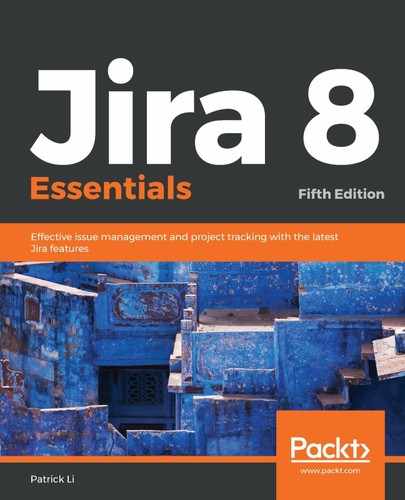There are two ways to add an outgoing mail server in Jira. Both options have some common configuration parameters that you will need to fill in. The following table shows these parameters:
|
Field |
Description |
|
Name |
This specifies a name for the mail server. |
|
Description |
This specifies a brief description of the mail server. |
|
From address |
This specifies an email address that outgoing emails will appear to have come from. |
|
Email prefix |
This specifies a prefix that will appear with all the emails sent from Jira. This allows your users to set up filter rules in their mail clients. The prefix will be added to the beginning of the email subject. |
|
Service Provider |
Select from one of the three predefined mail providers, that is, Google, Yahoo!, or the custom SMTP server. |
|
Host Name |
This specifies the hostname of your mail server (for example, smtp.example.com). |
|
SMTP Port |
This specifies the port number that your mail server will be running on. This is optional; if left blank, the default port number 25 will be used. |
|
Username |
This is used to authenticate against the mail server if required. Note that mail servers may require authentication to relay emails to non-local users. |
|
Password |
This is used to authenticate the user against the mail server if required. |
|
JNDI Location |
This is the JNDI lookup name if you already have a mail server configured for your application server. Refer to the following section for details. |
For the rest of the parameters, depending on which option you select to set up your mail server, you only need to fill in the ones that are appropriate.
The first option is to select from one of the built-in service providers and specify the mail server's details. For example, if you have an SMTP mail server running, you can select the Custom option from the Service Provider field and specify the host and port number. This is the approach most people will use as it is simple and straightforward. With this approach, the administrator fills in the mail server's host information, such as the hostname and port number:
- Browse to the Outgoing Mail page.
- Click on the Configure new SMTP mail server button.
- Enter the general details of your mail server, including the name, description, from address, and email prefix.
- Select the type of mail server from the Service Provider field.
- Enter the mail server's connection details.
- Click on the Test Connection button to verify the configuration.
- Click on the Add button to register to the mail server:

The second option is to use JNDI. This approach is slightly more complicated as it requires configuration on the application server itself, and it requires you to restart Jira.
If you are using the standalone distribution, which uses Apache Tomcat, the JNDI location will be java:comp/env/mail/JiraMailServer. You will also need to specify the mail server details as a JNDI resource in the server.xml file in previous line JIRA_INSTALL/conf directory.
A sample declaration for Apache Tomcat is shown in the following code snippet. You will need to substitute some values with the real values for some of the parameters in the code of your mail server's details:
<Resource name="mail/JiraMailServer" auth="Container" type="javax.mail.Session" mail.smtp.host="mail.server.host" mail.smtp.port="25" mail.transport.protocol="smtp" mail.smtp.auth="true" mail.smtp.user="username" password="password" />
You will need to restart Jira after saving your changes to the server.xml file.
